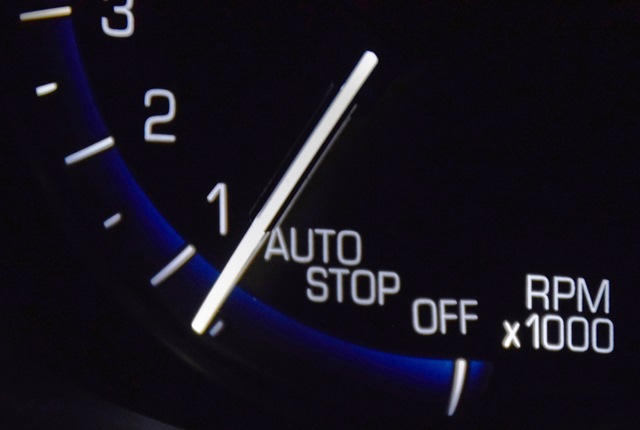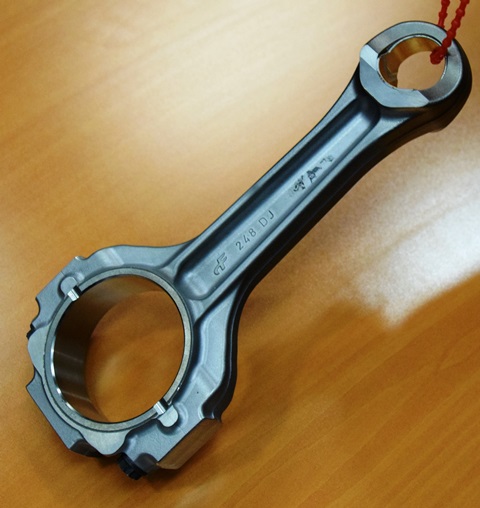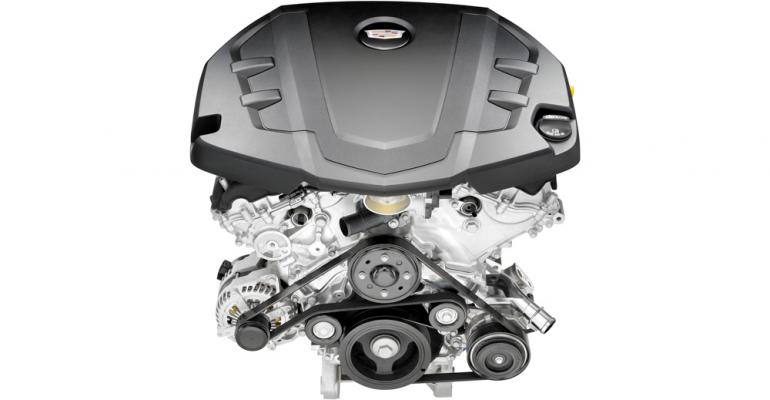PONTIAC, MI – When it comes to V-6 engines, powertrain engineers here are giving us something old, something new, something borrowed and something GM blue.
The General Motors Powertrain headquarters here has been busy recently filling the product pipeline with plug-ins, new 4-cyl. gasoline and diesel engines and, of course, the small-block V-8 family that’s been a central focus for a few years now.
This year, it’s the V-6 that gets to shine.
GM offers up three of them, all displacing 3.6L, for 2016 Wards 10 Best Engines testing: the naturally aspirated “High Feature” (codename LGX) in the Cadillac ATS and CTS and ’16 Chevrolet Camaro; the twin-turbo LF4 in the ATS-V, based on the previous-generation High Feature V-6; and the bi-fuel Chevrolet Impala that runs on both gasoline and compressed natural gas. The Impala CNG is primarily for fleet use.
 It’s about time GM shows a little love for the 6-pack. Yes, the automaker launched a 4.3L V-6 in the fullsize pickups a few years ago, but it’s essentially a small-block V-8 minus two cylinders. The 4.3L isn’t bad, but it’s unremarkable.
It’s about time GM shows a little love for the 6-pack. Yes, the automaker launched a 4.3L V-6 in the fullsize pickups a few years ago, but it’s essentially a small-block V-8 minus two cylinders. The 4.3L isn’t bad, but it’s unremarkable.
GM’s “High Feature” 3.6L DOHC V-6 launched more than 10 years ago and was significantly upgraded with the addition of direct injection for the ’08 Cadillac CTS, earning two consecutive Wards 10 Best Engines trophies at a time when the market was brimming with potent naturally aspirated 6-cyl. engines from multiple brands.
Since then, this V-6 has become a workhorse across GM’s portfolio, seeing duty in family sedans, luxury cruisers, muscle coupes and 7-passenger CUVs.
Finally, an all-new High Feature direct-injected 3.6L arrives, and the only parts borrowed from its predecessor are the hydraulic lash adjusters in the valvetrain.
Relative to the previous-generation 3.6L, the LGX has the same compression ratio (11.5:1), but the aluminum block and head are new. There’s slightly more displacement, with a longer stroke and slightly wider bore size. The engine is 22 lbs. (10 kg) heavier than its predecessor.
A new variable-displacement 2-stage oil pump saves energy by reducing the pressure and flow of oil within the engine and increasing it only when high speeds and high loads require it.
The engine now has four full phasers, enabling continuously variable cam phasing to help the engine breathe better in all operating modes. The timing system switches from a 3-chain intermediate drive to a 2-chain direct drive to improve sound characteristics.
Rubber Sprockets, Mid-Park Cam Phasers
Another first for GM is the use of rubber-cushioned sprockets for both the camshafts and crankshafts, again, to reduce noise. In addition, the sprockets are slightly offset, rather than being perfectly round, to dampen chain harmonics, another NVH play.
Unlike with the previous engine, Active Fuel Management cylinder deactivation and 12V stop/start are standard with the new LGX. During light loads and steady-state cruising, air and fuel are cut off from cylinders 2 and 5, improving fuel efficiency. It’s GM’s first overhead-cam engine with cylinder deactivation.

For smoother operation of the stop/start system, GM now uses “mid-park” cam phasers that set the camshaft in the optimal position each time the engine shuts off so it can restart quickly and without judder.
In combined driving in the ’16 CTS, the LGX is rated at 20/30 mpg (11.7-7.8 L/100 km) city/highway and consumes 10% less fuel than than the previous V-6 in the ’15 CTS.
GM benchmarked Nissan’s VQ, displacing 3.7L in the ’15 Infiniti Q40 sedan, for its sterling NVH characteristics, midrange torque and throttle response.
On paper, GM’s LGX engine tops the Infiniti’s fuel-economy rating of 19/27 mpg (12.3-8.7 L/100 km) with the VQ.
But that was Nissan’s old VQ. In the new front-wheel-drive Maxima, the smaller, redesigned 3.5L V-6 mated to a CVT achieved better than 26 mpg (9 L/100 km) for a number of editors driving the car in October, according to the trip computer.

The new VQ also is rated at 30 mpg on the highway, same as the ATS, and 2 mpg (0.9 km/L) better than the Cadillac in city driving.
The best fuel economy for a WardsAuto editor in the rear-wheel-drive ATS with the new 3.6L was 25.4 mpg (9.3 L/100 km), raising a question about its mileage superiority. Unlike the GM V-6, both the old and new Nissan engines lack the benefit of cylinder deactivation.
The GM engine tops both the new VQ in the Maxima and the old Infiniti 3.7L, producing 335 hp and 285 lb.-ft. (386 Nm) of torque while the Infiniti VQ makes 328 hp and 269 lb.-ft. (365 Nm). The new VQ in the Maxima is rated at 300 hp and 261 lb.-ft. (354 Nm) of torque.
GM’s LGX runs on regular fuel while both the new Maxima VQ and Infiniti 3.7L need premium.
In the ATS, editors find the LGX an ideal powertrain match, especially with the crisply shifting 8-speed automatic transmission, and describe it as “strong off the line and when passing” and “eager to rev and run.”
New Turbos, Old Engine
On the forced-induction front, GM brings an updated LF4 twin-turbo version of the previous-generation 3.6L V-6, featured initially in the ’16 ATS-V.

Engineers here proudly proclaim the 464-hp ATS-V beat the vaunted 425-hp BMW M3, with its twin-turbo 3.0L inline-6, at Germany’s Nurburgring. If both cars are equipped with an automatic transmission, the ATS-V can sprint to 60 mph (97 km/h) in 3.8 seconds, a tenth of a second faster than the Bimmer. The ATS-V also can be had with a 6-speed manual gearbox.
Rated at 445 lb.-ft. (603 Nm) of torque, the ATS-V’s LF4 out-grunts the M3 by 39 lb.-ft. (53 Nm). Both cars are rated at 24 mpg (9.8 L/100 km) on the highway, but the M3 has a 1-mpg (0.4-km/L) edge in the city, rated at 17 mpg (13.8 L/100 km). Both engines need premium fuel and have an identical compression ratio of 10.2:1.
GM touts the LF4’s specific output of 130 hp/L, but it actually trails that of the M3, which produces 143 hp/L. The LF4’s turbochargers, supplied by Mitsubishi Heavy Industries, are designed for high-rpm track use and are capable of 18 psi (1.2 bar) of boost pressure.
A patented low-volume charge air cooler is packaged efficiently within the intake manifold, resulting in a shorter path to the combustion chamber and quicker boost response. Piston oil squirters are re-targeted for improved temperature control.
Crankshaft counterweights are redesigned to reduce main/rod bearing reciprocating loads, allowing engine power to spool up more quickly when accelerating out of corners on the track.
The connecting rods are made of lightweight (and expensive) titanium, which reduces bearing loads at high engine speeds and takes out rotating inertia.

The oil pan is optimized to function under 1.03 g of lateral force.
Editors driving the ATS-V roundly praise the LF4 for its lack of turbo lag and for serving as an ideal complement to the chassis, while managing to achieve 22 mpg (10.6 L/100 km) during our evaluations.
Unlike the naturally aspirated V-6, the twin-turbo direct-injected LF4 does not use cylinder deactivation, nor does its predecessor, the LF3, which first appeared a few years ago in V-Sport versions of both the Cadillac XTS and CTS.
Those vehicles and engines remain in Cadillac’s portfolio. GM engineers say they expect the LF3, LF4 and naturally aspirated LGX engines to co-exist within the brands for a number of years.





